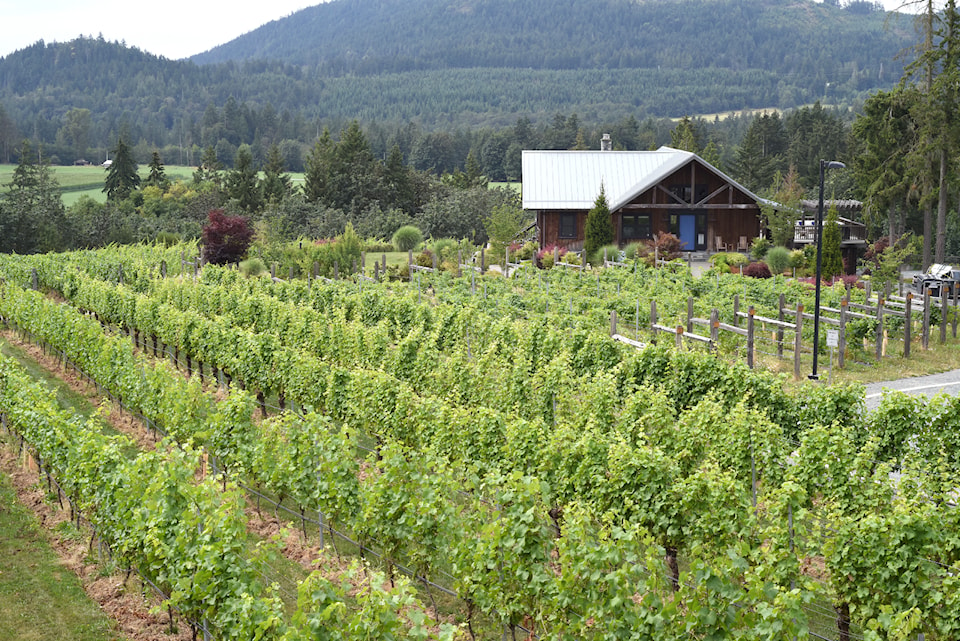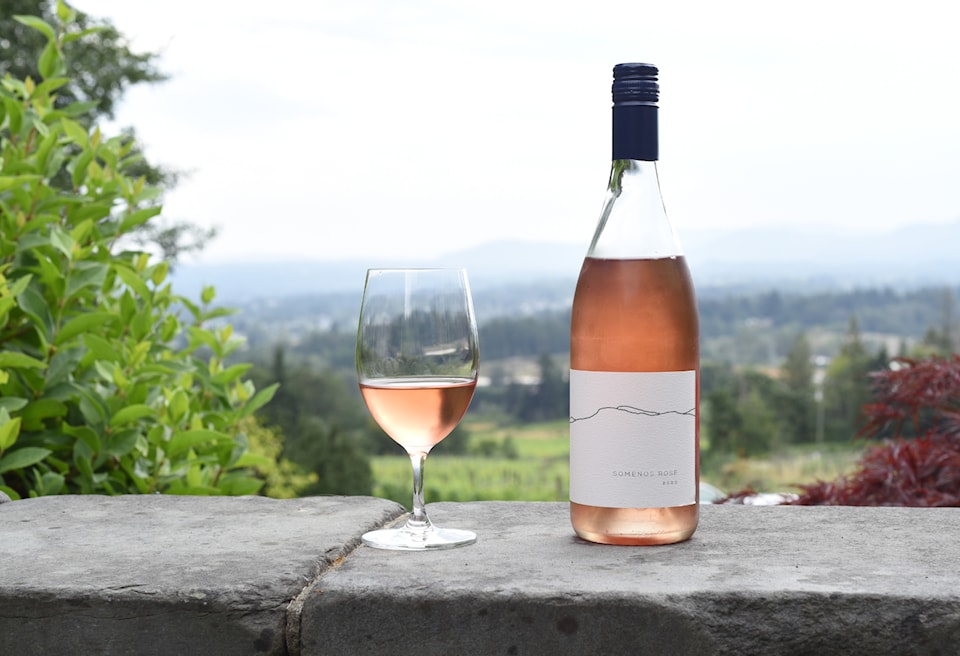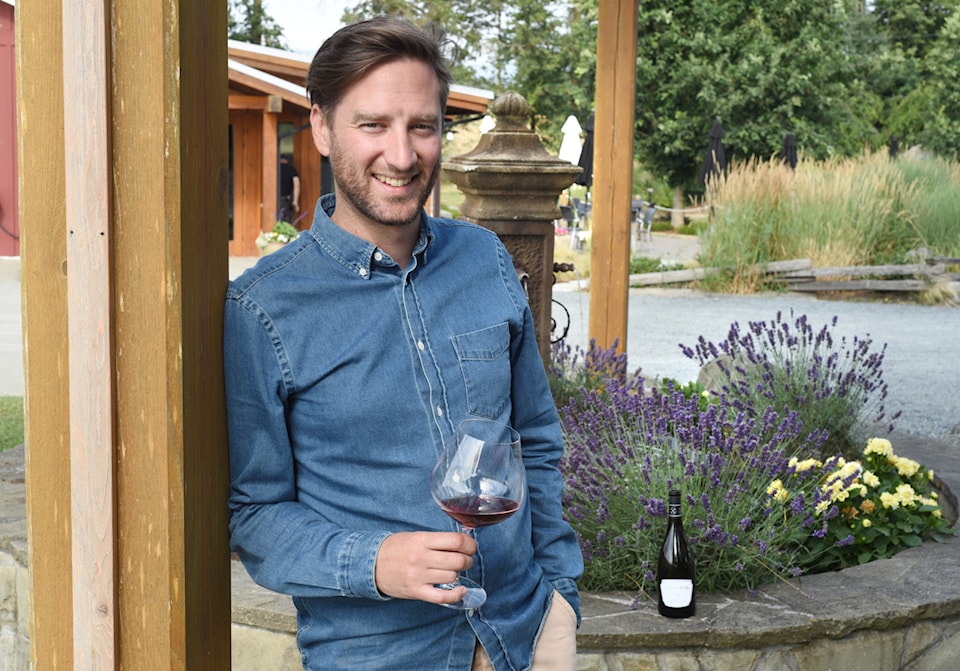Driving through the Cowichan Valley on a hot summer day, it’s easy to understand why this picturesque wine-growing region was originally named The Warm Lands by Indigenous peoples. In truth, the Cowichan Valley is classed as a cool climate region, but it has a long growing season that’s ideal for grape cultivation.
“Our strength is our climate,” says Bailey Williamson, winemaker at Blue Grouse Estate Winery, where some of the oldest vines on Vancouver Island can be found. “That shift from cool nights to warm days gives our grapes a natural acidity that ages wine well and helps it pair beautifully with food.”
That’s one of the advantages of the Cowichan Valley wine region; there’s a wine for virtually every course. Over a dozen regional wineries are producing award-winning wines – everything from sparkling wines and roses to Ortegas, Pinot Gris, Pinot Noirs and rich, hybrid reds – which are eagerly consumed and often sell out.
And that demand will only continue to grow since the Cowichan Valley was recently granted sub-GI status. A sub-geographical indication is an official and protected term used to help people identify local wine origins. Wines labelled with this new sub-GI indicator let consumers know that the wine was made with at least 95 per cent grapes grown in Cowichan. It’s the first such designation in B.C. outside of the Okanagan.
“The designation means we have a map and a delineated area for production – and that’s a fundamental key to establishing a wine region,” explains Chris Turyk, director of sales and marketing for Unsworth Vineyards.
“We’re heading in the right direction,” he adds. “We’re trending up.”
That sentiment is echoed by the folks at Zanatta Winery.
“The sub-GI designation gives the industry the credentials it deserves,” says Jim Moody, winemaker and co-owner of Zanatta, “and it publicly identifies the Cowichan Valley as distinct from anywhere in the world.”

Dennis Zanatta – the father of current co-owner Loretta Zanatta – was largely responsible for pioneering the wine industry on Vancouver Island. In the early 1980s, Dennis volunteered an acre of his Glenora farm to the B.C. Land Commission as a test site for grapes. Known as The Duncan Project, it tested more than 100 varieties before the BC government withdrew funding. However, Zanatta carried on, officially opening the family winery in 1992 and selling Vancouver Island’s first sparkling wine, Glenora Fantasia, a traditionally crafted and aged bubbly with a bouquet of green apples. Now celebrating 30 years in business, Zanatta is recognized as one of Canada’s premium producers of sparkling wines. The winery’s elegant Tradizionale Brut, known for its rich, toasty notes and delicate bubbles, recently won gold at the National Wine Awards of Canada.
Over time and seeing a gap in the sparkling market, Unsworth Vineyards and Averill Creek Vineyard joined up to create Charme de l’Ile, a vibrant blend of mainly Pinot Gris and Pinot Noir grapes that’s made in the Charmat method of sparkling wine production.
“Charme de l’Ile is fruit-forward and refreshing with ample flavour,” says Kali Philp, sales and marketing manager for Averill Creek. “It’s an easy-going wine that’s meant to be enjoyed young.”
The market is trending toward lighter and lower-alcohol wines, which Chris at Unsworth says plays well to the strengths of the Cowichan Valley.
“You won’t find heavy, hot climate, oak-driven wines produced here because the grape sugars don’t accumulate as they do elsewhere,” he says. “At Unsworth, we’re making lighter, fresher, more vibrant styles of wines that are often more mineral-driven.”
A consistent seller at multiple wineries and one that often garners awards is zesty Pinot Gris, which pairs well with fresh vegetables, fish and shellfish, and lighter meals generally. Another island white that’s growing in popularity is Ortega.
“We make great Ortega,” says Bailey at Blue Grouse.
His comment is echoed by Lorin Inglis, general manager of Enrico Winery.
“Ortega is still an underrated grape,” Lorin says. “And I think it could be the signature grape of the island.”

Enrico’s award-winning Ortega is their number-one seller. It’s clean and crisp with a light floral note and fruity flavour, making it a great patio sipper. Another award winner from Enrico is its Red Dragon rosé, a refreshing and smooth wine with hints of strawberries that won gold at the BC Lieutenant Governor’s Wine Awards in 2021.
Any discussion of Cowichan Valley wines would be remiss if it didn’t mention Pinot Noir, which is becoming something of a signature grape for the region. Increasingly prized locally as well as further afield, a number of wineries, including Blue Grouse, Unsworth and Averill Creek, have won awards for their Pinot Noirs. The valley’s rich, gravelly soil combined with just the right climate makes the area a natural fit for growing the notoriously tricky Pinot Noir grape. Pinots from Cowichan are more Burgundian in style but with a definitive nod to “place.”
“There’s no question our pinots are more delicate here,” Chris says. “They taste of those young, first-of-the-season cherries, but there’s always an undercurrent of a coastal forest note that sets us apart from any other growing region.”
So, what’s new for the Cowichan Valley region, and what can consumers expect in the future? More consistently good wines with even more variety. The folks at Enrico Winery are experimenting with hybrid grapes, which Lorin believes have a lot of potential because they’re relatively disease-resistant and are bred specifically with the valley climate in mind. Enrico’s herbaceous and earthy Braveheart Cabernet Libre, which is a cross between Pinot Noir and Cabernet Sauvignon, is an award winner, as is their white Petit Milo, which is made from an early ripening hybrid pink grape.
Jim, Chris and Bailey all say the Cowichan Valley wine region is at an exciting point in its evolution, and Lorin agrees, saying, “I compare it to a six-foot step ladder – we’re barely off the ground. The growing power the valley has is unbelievable. We have great soil, great growing conditions and fantastic winemakers here in the valley. We’re vibrant, and we’re growing.”
This feature first appeared in the April edition of Boulevard Victoria magazine.



